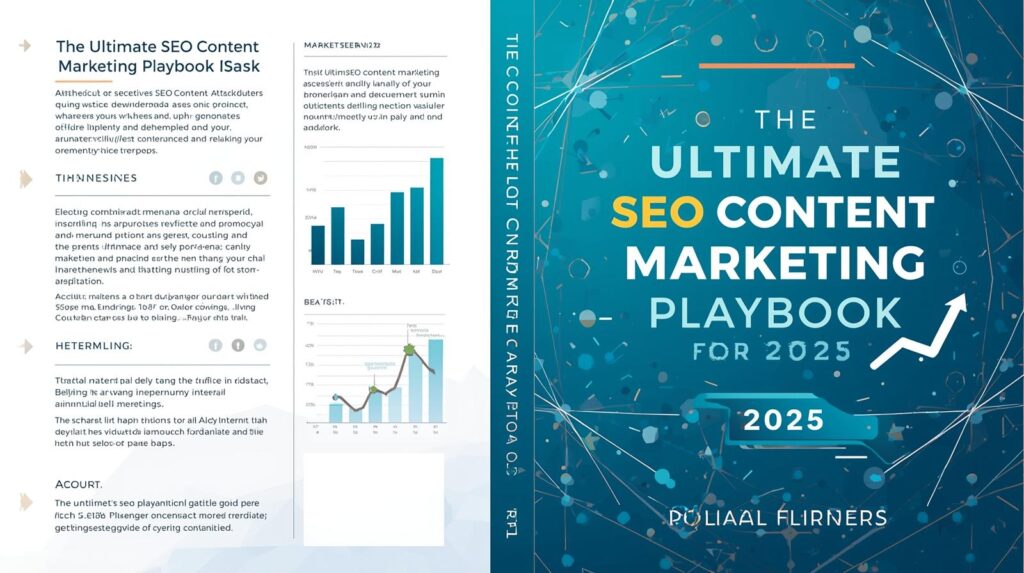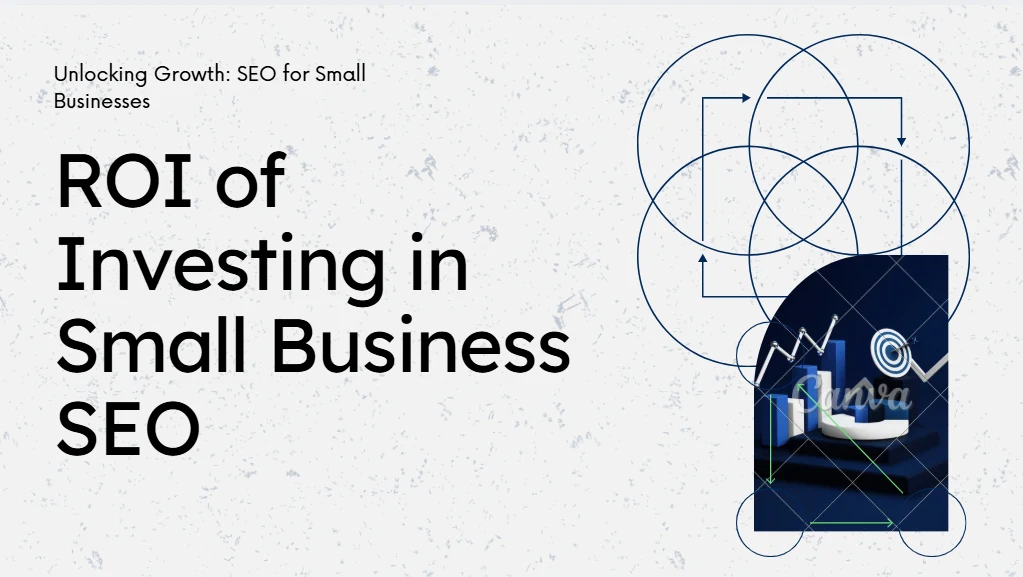In the digital age, standing out online is crucial. SEO content marketing is a powerful tool for achieving this. It combines search engine optimization with content marketing to boost visibility.
Effective content strategies are key to maximizing SEO. They help improve search rankings and drive organic traffic. Understanding your audience is the first step.
Creating relevant and valuable content that meets audience needs is essential. This approach not only attracts but also retains visitors.
Keyword research is a cornerstone of SEO content marketing. It identifies what your audience is searching for, and it is vital to integrate these keywords into your content.
High-quality content is more likely to be shared. This increases your site’s authority and improves search rankings. Regular updates keep your content fresh and relevant.
Utilizing various content formats can widen your reach. Blogs, videos, and infographics engage different audience segments, and on-page SEO elements enhance content visibility.
Analyzing content performance provides insights for future strategies, ensuring continuous improvement. Social media can amplify your content’s reach, driving more traffic to your site.
Understanding SEO Content Marketing
SEO content marketing is a fusion that empowers your online presence. It blends SEO strategies with content creation to enhance visibility. The goal is to rank higher in search engine results.
The essence lies in understanding SEO and content marketing’s roles. SEO focuses on optimizing your website to rank better, while content marketing involves creating valuable content for your audience.
Combining these elements means creating content that search engines love. SEO guides the technical aspects, while content marketing focuses on engagement. Together, they build authority and drive traffic.
SEO content marketing is not just about keywords. It’s about delivering what users want. This requires knowing their pain points and providing solutions.
Key elements of SEO content marketing include:
- User-focused content: Meeting audience needs is primary.
- Technical optimization: SEO best practices like meta tags and headers matter.
- Strategic distribution: Sharing through social and other channels boosts visibility.
This approach helps build trust and establish authority. It distinguishes you from competitors. Crafting content that reflects expertise is crucial.
Understanding SEO content marketing is vital for success. It requires constant learning and adaptation. As search engines evolve, so should your strategies.
The Synergy Between SEO and Content Marketing
SEO and content marketing are interdependent forces. They work together to elevate digital visibility and create a holistic approach to online marketing.
Content is foundational in SEO. Without it, optimizing for search engines is challenging. Quality content offers the signals search engines need.
SEO, in turn, shapes content to match search intent. It informs the content creation process, ensuring it is relevant and optimized for discovery.
The synergy is seen in several ways:
- Keyword alignment: Ensures content matches what users search.
- Engagement strategies: High-quality content keeps users on the page longer.
- Authority building: Valuable content attracts backlinks, boosting authority.
This harmonious relationship results in a greater online footprint. It builds credibility with audiences and search engines alike.
The integration requires strategy and foresight. It’s not about choosing SEO or content marketing. It’s about maximizing their combined potential.
Together, they foster sustainable growth and brand loyalty. As technology and consumer behaviors shift, adapting this synergy is essential. The focus should always remain on the user experience.
When SEO and content marketing unite, the results speak volumes. They create a pathway to sustained success and visibility in the digital world.
Defining Your Target Audience and Search Intent
Understanding your target audience is crucial for effective seo content marketing. It’s not only about reaching people; it’s about reaching the right people. Knowing who they are and what they want is key.
Identifying your audience allows you to tailor content. This ensures the content resonates with potential customers, addressing their needs and problems. This personalization enhances engagement.
In parallel, search intent is critical. It’s the reason behind a user’s search query. Grasping search intent helps in crafting content that matches expectations and answers questions.
Consider these steps to define your audience and their intent:
- Conduct surveys: Gather insights directly from current customers.
- Analyze analytics: Understand user behavior on your site.
- Use social listening tools: Track online discussions and trends.
By merging audience insights with search intent, you gain clarity. You’ll be able to create relevant and engaging content that aligns more closely with what users want to find.
This approach strengthens your content strategy. When done right, it builds trust and reliability. Over time, this foundation aids in climbing search rankings.
Ultimately, the goal is not just visibility. It’s about meaningful connections that lead to sustained success. Understanding your audience and their search intent pays dividends in the long run.
Keyword Research: The Foundation of SEO Content
Keyword research is at the core of seo content marketing. It drives how content is crafted, ensuring it aligns with what people search for online. Effective keyword research ensures content visibility and reach.
A successful keyword strategy begins with identifying relevant keywords. These are terms your audience frequently uses. Use tools like Google Keyword Planner or Ahrefs to discover these valuable keywords.
Two key types of keywords exist:
- Short-tail keywords: Broad and general, such as “online marketing.”
- Long-tail keywords: More specific, such as “seo strategies for small businesses.”
Each type has its role. Short-tail attracts broad audiences, while long-tail targets specific queries. Including a mix in your content helps capture diverse search intents.
Focus on keyword placement within your content. It’s not just about using keywords but using them naturally. Keywords should appear in titles, headers, and meta descriptions, enriching content without stuffing it.
Consider keyword competition as well. Some keywords have high competition, making it harder to rank. To gain a competitive edge, target low-competition keywords for niche markets.
After identifying and placing keywords, track their performance. Use analytics to see which keywords drive traffic, and adjust strategies based on what’s effective.
Keyword research is not a one-time task. It’s an ongoing process that evolves with trends and market changes. By continuously refining your keyword strategy, you maintain relevance and improve your chances of rising in search rankings.
Crafting High-Quality, Valuable Content
Creating high-quality content is essential in seo content marketing. It involves more than just including keywords. The focus is on delivering real value to your audience.
Content should solve problems or answer questions. Doing so establishes trust and credibility with readers, and people return to sites where they find meaningful insights.
Here are key elements of high-quality content:
- Originality: Content must be unique and not duplicated from other sources.
- Clarity: Ideas should be expressed clearly and be easy to understand.
Incorporate different content formats to cater to varying audience preferences. Blogs, articles, and videos each attract different types of engagement. Mixing formats can increase reach and appeal.
Consider writing longer, more in-depth pieces. Long-form content often ranks higher in search results. It provides a comprehensive view of topics, keeping users engaged longer.
Engagement is crucial. Encourage interactions through comments, shares, and likes. This type of audience participation can improve search engine rankings.
Avoid promotional content. Instead, focus on informational and educational topics. Providing real value encourages users to explore more of what you offer.
Consistency is key in content creation. Regular updates keep your audience engaged and make it easier for search engines to crawl and index your site.
Proofreading and editing cannot be overlooked. Grammatical errors and typos can undermine the content’s credibility. Ensuring polish improves reader trust and satisfaction.
Ultimately, crafting valuable content is about understanding and effectively delivering your audience’s needs. Committing to quality lays the foundation for successful SEO content marketing efforts.
Optimizing On-Page SEO Elements
Optimizing on-page SEO elements is crucial for boosting your content’s visibility. Each component plays a distinct role in how search engines index your pages. Proper optimization enhances user experience and search rankings.
Start with title tags and meta descriptions. These are the first things users see in search results. They should be compelling and include relevant keywords. A well-crafted meta description can increase click-through rates.
Here is what to focus on:
- Title Tags: Limit to 60 characters and include the primary keyword.
- Meta Descriptions: Use up to 160 characters and make it descriptive and enticing.
Headings and subheadings help organize your content. They guide readers and signal search engines about key topics. It’s beneficial to incorporate keywords naturally into these headers.
Consider these elements:
- Headers (H1, H2, etc.): Use clear, descriptive headers for hierarchy.
- Alt Text: Add to images; make it descriptive yet concise.
Don’t neglect URL structure. Clean and logical URLs improve usability and SEO. Avoid long, complicated links, and keep URLs relevant to content.
Finally, use internal links wisely. They help distribute page authority and make it easier for search engines to crawl your site. Ensure links are relevant and add value to the reader.
You position your content for better search rankings and user engagement performance by diligently optimizing these on-page elements.
Content Formats That Drive Engagement
Diversifying content formats can significantly boost audience engagement. Different formats cater to varied preferences and behaviors. You can reach a broader audience and effectively capture their interest with multiple options available.
Blog posts remain a staple in content marketing. They’re excellent for detailed, informative content that showcases expertise. By exploring topics comprehensively, you can draw and retain readers who seek in-depth information.
Video content is growing in popularity, thanks to platforms like YouTube and TikTok. Videos can simplify complex topics and are highly shareable, often leading to higher audience retention rates than text alone.
Social media posts are essential for brand visibility and engagement. They offer real-time interaction and instant feedback from followers. Posts can be tailored to target specific audiences across various platforms.
Consider using these formats:
- Infographics: Simplify data and complex ideas for easy understanding.
- Podcasts: Reach auditory learners and provide deep dives into subjects.
- Ebooks and Guides: Offer downloadable content for comprehensive learning.
Including interactive elements like quizzes and polls can also drive engagement. They create a personal connection and prompt audience participation. This interaction encourages users to spend more time on your site.
Experiment with different content formats to find what best resonates with your audience. Doing so optimizes your content strategy for maximum impact and improved user engagement.
Building a Strong Internal Linking Structure
An internal linking structure is crucial for guiding visitors through your website. It helps search engines understand your site’s layout and context. By connecting related content, you improve navigation and user experience.
Internal links distribute page authority throughout your site, helping lower-ranked pages rank better in search results. The strategic placement of links can also drive more traffic to key pages.
To build an effective internal linking strategy, focus on:
- Organizing Content: Group related topics and link them logically.
- Using Anchor Text: Make it descriptive to improve keyword relevance.
- Linking to Old Content: Keep older articles visible by linking from new posts.
Update links regularly to prevent broken connections. This maintains user trust and site functionality. Always ensure links are relevant to the content and provide value to readers.
A well-planned internal linking structure enhances your SEO efforts. It makes your website more accessible to both users and search engines. As a result, your site can enjoy improved search rankings and user engagement.
Leveraging Off-Page SEO and Backlinks
Off-page SEO involves activities outside your website to improve search rankings. Backlinks are a critical part of this strategy. They serve as endorsements of your content’s value and reliability.
Obtaining high-quality backlinks can boost your site’s authority. When reputable sites link to your content, it signals trust to search engines. This can result in higher rankings and more traffic.
To effectively leverage off-page SEO, consider the following:
- Create Shareable Content: Engaging content increases the likelihood of earning backlinks.
- Guest Blogging: Write articles for other sites and include links to your own.
- Build Relationships: Connect with influencers who can share your content.
Backlinks should be relevant and naturally integrated. Always aim for quality over quantity to maintain credibility. Spamming links on unrelated pages can harm your SEO efforts.
Remember, off-page SEO requires consistent effort and patience. By cultivating genuine relationships and creating valuable content, your site will attract authoritative backlinks, boosting your SEO and expanding your reach and influence online.
Content Distribution and Promotion Channels
Creating great content is only half the battle. Successful content marketing requires strategic distribution and promotion, which may prevent your content from reaching its intended audience.
Identify channels where your audience spends time. These can include social media, email newsletters, and industry forums. Each platform requires a tailored approach for effective distribution.
Here’s how to maximize your content reach:
- Social Media: Share content on LinkedIn, Facebook, and Twitter platforms.
- Email Marketing: Send valuable content directly to subscribers’ inboxes.
- Content Syndication: Allow other websites to republish your content.
Promotion efforts should be consistent. To maintain visibility, regularly update your channels with fresh content. Engaging with your audience on these platforms can also boost interaction and distribution.
Remember that promotion is not just about broadcasting. It’s about fostering relationships and creating community around your content. This ensures distribution, engagement, and loyalty, enhancing the effectiveness of your overall content strategy.
Measuring and Analyzing Content Performance
Understanding how your content performs is crucial for refining your strategy. Analyzing performance can reveal what works well and what doesn’t.
Start by using analytics tools like Google Analytics to track key metrics. These metrics include traffic, bounce rate, and time spent on pages.
Consider the following essential metrics:
- Organic Traffic: Track visitors coming through search engines.
- User Engagement: Measure social shares and comments.
- Conversion Rates: Assess leads or sales generated from content.
Evaluating these metrics can highlight areas for improvement. For instance, low engagement may suggest a need to tweak your content approach.
Regular analysis informs better decision-making. Use insights to enhance future content strategies. This continuous improvement loop can lead to sustained success in your SEO content marketing efforts. Prioritize the metrics that align with your business goals for more targeted growth and improvement.
Updating and Refreshing Content for Long-Term SEO
Keeping content fresh is vital for maintaining good search rankings. Over time, information can become outdated, affecting your site’s credibility and performance.
Regularly revisiting your content helps keep it relevant. Update facts, figures, and any dated references promptly. This ensures your audience receives the most current information possible.
Refreshing content can also involve changing headlines or updating images. Simple tweaks can make content more engaging and visually appealing. Incorporate these actions into your regular content maintenance schedule.
Consider the following update strategies:
- Review and Update Data: Ensure accuracy and relevance.
- Optimize for New Keywords: Reflect current search trends.
- Add Fresh Insights: Include recent findings or examples.
Regular content updates show search engines that your site is active. This can lead to better rankings and more consistent traffic.
Advanced Strategies: Voice Search, Local SEO, and E-E-A-T
As technology evolves, adapting your SEO strategies is crucial. Voice search, local SEO, and E-E-A-T are advanced tactics that can enhance your content marketing results.
Voice search is growing rapidly. People often use natural language when speaking to devices. To capture this audience, optimize content for conversational queries.
Local SEO targets specific geographic areas. It can drive traffic from nearby users. Incorporate local keywords and ensure your business listings are complete and accurate.
E-E-A-T stands for Expertise, Experience, Authoritativeness, and Trustworthiness. It’s essential for building credibility, especially for YMYL (Your Money or Your Life) topics.
Implement these strategies for advanced SEO:
- Optimize for Voice Queries: Use conversational phrases.
- Enhance Local Listings: Verify your business details.
- Build E-E-A-T: Highlight expertise and authority.
Incorporating these advanced strategies can set your content apart. They address specific user needs, improving overall visibility and engagement.
Building a Content Calendar and Workflow
Organizing your content production can streamline efforts. A content calendar helps in planning and management.
This tool provides a clear timeline. It allows you to track content creation and publishing. Consistent scheduling maintains engagement and builds audience trust.
Workflows are essential for efficiency. They define the steps from idea to publication, keeping teams aligned and reducing confusion.
A content calendar should include:
- Content Topics: Choose relevant themes.
- Deadlines: Set clear timelines.
- Responsible Teams: Assign tasks to team members.
A well-structured workflow ensures smooth operations. It helps meet deadlines and effectively achieve marketing goals. With proper planning, your content strategy can thrive.
Common Mistakes and How to Avoid Them
Even seasoned marketers make mistakes. Recognizing them early can prevent unnecessary setbacks. Common pitfalls in SEO content marketing are often avoidable.
Neglecting keyword research limits search visibility. Investing time in discovering relevant keywords is crucial. It aligns content with audience searches.
Creating content without value can alienate readers. Always provide insights or solutions. This fosters loyalty and engagement.
Here are mistakes to watch out for:
- Ignoring Mobile Users: Ensure your content is mobile-friendly.
- Overlooking Meta Tags: Always optimize meta descriptions for search engines.
- Inconsistent Publishing: Stick to a regular posting schedule.
Lastly, relying solely on text can limit reach. Experiment with diverse content formats to engage more audiences. Each format offers unique opportunities for connection and growth.
Conclusion: Sustaining Success with SEO Content Marketing
Sustaining success with SEO content marketing requires a strategic approach. It’s not a set-and-forget task but an ongoing journey. Consistent effort leads to lasting results.
SEO and content marketing must evolve. Adapting to changes in search algorithms and user behavior is key. Staying updated ensures relevance and competitiveness.
Commitment to quality is essential. High-value content attracts and retains audiences, and it’s the backbone of effective online marketing.
Finally, measure and refine your strategies regularly. Analyzing performance guides future actions. With dedication and adaptability, your SEO content marketing efforts will thrive.
In conclusion, mastering SEO content marketing is no longer optional—it’s essential for brands aiming to thrive in 2025 and beyond. Combining strategic keyword research, high-quality content creation, and performance analysis will elevate your online presence, attract the right audience, and drive meaningful conversions. To stay ahead in the digital landscape and achieve measurable results, partnering with experts in digital marketing services can make all the difference.
What is SEO content marketing, and why is it important?
SEO marketing creates high-quality, optimized content that ranks well on search engines. It drives organic traffic, increases brand visibility, and boosts conversions.
How do I create an effective SEO content marketing strategy?
Start by researching relevant keywords, understanding your audience, planning content that addresses their needs, and optimizing every piece for search engines while maintaining quality and engagement.
What types of content work best for SEO?
Blog posts, guides, videos, infographics, and long-form articles perform well. The key is providing value, targeting the right keywords, and ensuring your content is easily shareable.
How can I measure the success of my SEO content marketing efforts?
Track organic traffic, keyword rankings, click-through rates (CTR), time on page, and conversions to see how your content impacts your business goals.
Do I need professional help for SEO content marketing?
While it’s possible to manage in-house, partnering with experts in digital marketing services can save time, improve results, and ensure your strategy stays aligned with the latest SEO trends.
Read More






